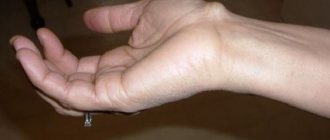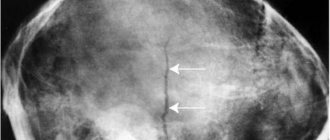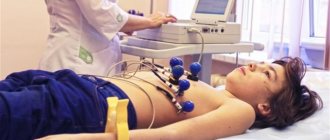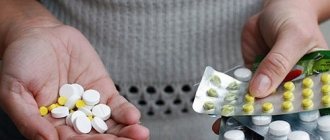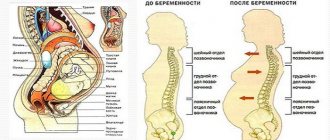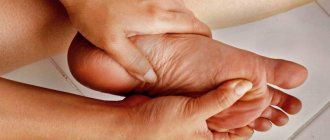Home Genitourinary diseases Symptoms of genitourinary diseases
- Features of the disease
- Causes of hyperuricemia
- Diagnosis of the disease
- Treatment of hyperuricemia
- Drug treatment of hyperuricemia
- Traditional recipes for the treatment of hyperuricemia
Recently, a pathological condition such as hyperuricemia has become widespread. Few people know what it is and how it can affect the human body. But timely detection of the disease can help cope with the disease as soon as possible.
Development mechanisms
Hyperuricemia (also known as uricemia or hyperuricosuria) has its own ICD-10 code. E79. Strictly speaking, this is a somewhat generalized disorder. But an increase in the amount of uric acid fits into it.
The disease develops against the background of one or more factors. The question is quite complicated. Especially from a diagnostic point of view.
First
The first possible option is a metabolic disorder. In particular, purine metabolism. These compounds are natural building materials for the body. Moreover, for its foundation. Since normal purine metabolism ensures the reconstruction of DNA and RNA molecules. This is a kind of basis for all other processes in the body.
Purines are found in all foods. Huge amounts can be found in meat, fish, sausages, tea, coffee, vegetables, and cereals.
This doesn't mean you need to go on a strict diet. But when consuming such foods, the risk of increased uric acid also increases.
Why a metabolic disorder occurs is another question. Pathologies of the liver, kidneys, and endocrine system are possible.
Second
This mechanism concerns fructose consumption. Saccharides are metabolized in the liver. There they are processed. In this case, uric acid is a byproduct of complex biochemical reactions.
When fructose breaks down, the substance is released into the bloodstream. The more, the more intense the pathological process will be. The risks increase tenfold if the patient has diabetes.
Third
Impaired excretion of metabolic products. Basically, waste compounds are eliminated naturally. Particularly active in urine. However, if the filtering function of the kidneys is impaired, normal metabolism cannot be expected.
The problem arises with dysfunctional deviations, failure of a paired organ. The more intense the violation, the worse the situation is.
With renal disorders, oliguria occurs. Urine becomes small, no more than 50 ml per day. Waste metabolic products enter the bloodstream and poison the body.
Often all three mechanisms are found in the same patient. This worsens the overall prognosis and complicates treatment. Although the chances of recovery are high. It just takes more work and self-discipline.
Features of the disease
Numerous studies have confirmed that a pathological condition associated with impaired purine metabolism can occur in 20% of adults and 3% of children. The growth of the disease is associated with an unfavorable environmental situation: combustion products of gasoline oils, which are massively released into the environment, negatively affect purine metabolism.
Today, doctors distinguish three types of disease:
- metabolic form;
- renal form;
- mixed.
The first form of the disease develops against the background of disturbances in metabolic processes. The second directly depends on disturbances in kidney function. The third is caused by a general malfunction of the body.
Normally, the concentration of uric acid fluctuates between 240-400 µm/l. However, given the modern type of nutrition, many doctors consider 345 µm/l to be the borderline indicator.
Classification
Several criteria for typing a disorder can be identified. The first concerns precisely the mechanism of disease development.
Accordingly they are called:
- Renal hyperuricosuria. It accompanies any kidney disorder. Including failure, nephropathy or inflammatory processes. Like pyelonephritis or autoimmune glomerulonephritis.
- Metabolic form. Caused by disruption of normal metabolism in the body. Such disorders are almost always secondary. That is, they are caused by other diseases. For example, diabetes mellitus, damage to the thyroid gland, pituitary gland. Congenital variants are extremely rare.
- Liver form. As the name suggests, it occurs in pathologies of the largest gland. The reason is the low activity of the organ.
- The nutritional variety is caused by the incorrect actions of the patient himself. Irresponsible attitude towards nutrition. With high consumption of glucose and alcohol, hyperuricemia is likely.
- Mixed type. It has the characteristics of the above varieties in any combination.
The pathological process is also classified according to its more general origin:
- Congenital disorders. Seen infrequently. As already said.
- Acquired form. It is observed in almost 99% of cases, if not more.
Sometimes the classification refers to the severity of the disorder. But this typification is not universally accepted. There are differences by country.
Divisions into types are used to better understand the process, describe it and quickly select a set of diagnostics and treatment. This is an indispensable tool in the arsenal of specialists in endocrinology and related specialties (for example, hematology).
Causes of increased uric acid in the blood
The causes of hyperuricemia are very diverse. Among them, the following stand out:
- excessive formation of uric acid (failure of metabolic processes in the body);
- impaired renal function and deterioration of excretion (removal) of urinary magnesium.
Among other causes, doctors note hereditary enzyme defects, cancer, psoriasis, hemolysis, and excessive physical exertion.
The secondary form of hyperuricemia most often develops in elderly people with a history of diabetes mellitus, persistent hypertension or atherosclerosis. The peak incidence occurs at 45–55 years in men and 60–65 years in women. Before menopause, women rarely suffer from the effects of purine imbalance, perhaps under the protection of estrogen.
Symptoms
Interestingly, the clinical picture mainly occurs in children. Adult patients experience the pathological process with virtually no symptoms. Although there are exceptions.
Signs of the disorder can be described in a small list:
- Arthralgia. Simply put, joint pain. A special case of hyperuricemia is gout. When uric acid crystallizes and deposits in cavities and other joint structures.
As a rule, small peripheral tissues are the first to be affected. For example, big toes.
As the disease progresses, large joints, such as knees, hips, and elbows, are also involved. The violation can last for years, then recurring, then dying down again.
- Muscle pain. Discomfort occurs spontaneously. The nature of the sensations resembles those during inflammatory processes. Myositis (the well-known expression “inflated” the neck or lower back well explains the essence of the phenomenon and the “unforgettable” sensations).
- Increased sensitivity to all irritants. Light, noise. Patients literally cannot withstand even the average volume of sound; this sign of hyperuricemia is especially common in children. Adults endure it even harder, since they are forced to spend most of their time in a noisy society.
- Cramps. As a rule, they are represented by the simplest hyperkinesis. For example, tics. Voluntary wave-like muscle contractions without pain are typical symptoms of hyperuricemia.
Other types of seizures are possible, but not common. Usually in 2-5% of cases of the total. And then, they occur in children. In adults, only tics are present. Why such symptoms occur is not yet known for certain.
- Liver disorders. Also the gallbladder. Deviations relate to the outflow of bile. Critical disorders are possible, including obstructive jaundice and cholecystitis. There are many options.
Interestingly, secondary liver damage is accompanied by impairment of its functions. Consequently, purines and uric acid will accumulate even more actively. Is it worth saying how this will end?
It is worth repeating that asymptomatic hyperuricemia is typical in adult patients. They don't experience any discomfort.
Symptoms appear only when the kidneys are involved in the pathological process. Possible pyelonephritis. Inflammation of the tissues of a paired organ of infectious origin.
Accordingly, specific signs:
- Pain in the lumbar region. Intense. Worse before urination. They calm down after. They do not respond to the physical activity of patients.
- False urges to visit the toilet are frequent. The so-called pollakiuria.
- Then much more menacing symptoms arise. For example, polyuria. When an unnatural amount of urine is produced. Over 2 liters. Up to 5-6. The patient experiences dehydration, hypovolemia (when the volume of circulating blood decreases).
- At advanced stages of the disorder, the opposite phenomenon occurs - oliguria. That is, insufficient amount of fluid released.
The clinical picture is complex. It is extremely difficult to say that something is wrong. Only diagnostics puts an end to the question.
Main signs of hyperuricemia
In adults, the disease often occurs without pronounced signs of inflammatory arthritis and gouty nodes. Such asymptomatic hyperuricuria is a borderline condition and makes itself felt only by an increased level of uric acid in the plasma. Because of this, it is rarely possible to make a diagnosis in a timely manner, before the stage of transformation into urate disease or infectious pyelonephritis.
In children, the clinical picture of urekemia is more intense. The child may complain of the following ailments:
- pain in muscles and joints:
- intolerance to loud sounds, strong odors and bright light;
- discomfort in the right side (deterioration of bile secretion);
- frequent urge to urinate at night;
- headache, fever, chills;
- involuntary muscle twitching.
Causes and treatment
The factors are varied. Not all are pathological. You can name dozens of culprits for the disorder.
Poor diet high in purines
They are found in all products. There are especially many of these substances in red meat and alcohol. Therefore, food lovers are in a high-risk area. Purines come naturally. Which is what causes the violation.
Treatment. It is enough to adjust your diet. There is no need to go on a starvation diet. Moreover, this will not help. It is important to include more white dietary meat in your menu. Fruits, fresh vegetables. Completely eliminate alcohol from your life.
The same goes for insatiable consumption of sweets. Sakharov. You need to limit yourself a little. Then the concentration of uric acid will drop by itself, and everything will return to normal.
Hypertension
Associated with increased blood pressure. The problem is that with this disease, blood moves through the vessels slowly. Consequently, normal renal filtration becomes problematic and hyperuricemia develops. Including due to damage to the paired organ. It makes sense to undergo diagnostics and a course of therapy.
Treatment. Correction of high blood pressure. Specialized drugs are used. For example, ACE inhibitors, sartans, beta blockers, calcium antagonists and centrally acting agents.
Diuretics and statins (fight lipids and fats) are prescribed as needed.
There are plenty of options. Treatment issues are best left to cardiologists.
Inflammatory kidney diseases
Pyelonephritis and glomerulonephritis as the main causes of hyperuricemia. Lesions of the excretory system negatively affect metabolism. Since purines, their products and derivatives, uric acid are not eliminated quickly and efficiently enough.
Treatment. Pyelonephritis is treated with anti-inflammatory drugs and antiseptics. Diuretics are also prescribed. Not necessarily in the form of tablets or classical drugs. They resort to the help of herbal remedies. If the patient does not have allergies.
Tumor processes
Oncology itself is extremely dangerous. Violations of purine metabolism are due to the essence of neoplasia. When cells break down, destruction products are released into the bloodstream. Including purines, uric acid itself. This is a complex biochemical process.
Treatment. Always required and as quickly as possible. An operation is scheduled. The surgeon’s task is to excise the malignant tumor as much as possible. Only in this case there is a chance of recovery.
Chemotherapy and radiation therapy are prescribed as needed. To get rid of the remnants of the tumor, eliminate those parts that could not be removed surgically.
Diabetes
Classic endocrine pathology. Accompanied by metabolic disorders. And all at once. Purine, lipid, etc.
The patient is faced with a lot of problems. An increase in uric acid concentration is the lesser of the evils.
Treatment. Strict low sugar diet. If necessary, administer insulin. To artificially reduce the amount of glucose in the blood.
Iron-deficiency anemia
It is also accompanied by metabolic disorders. Read more about the mechanisms of development of iron deficiency anemia and treatment methods in this article.
The therapy is quite simple. It is necessary to systematically administer iron supplements in high concentrations over a week or more. This way you can adjust the amount of the substance.
However, another problem is possible. Sometimes iron is not absorbed due to disruption of the internal organs. Small intestine, as an option.
Then you also need to treat the root cause. Otherwise, the compound will not be absorbed on its own.
Pregnancy
Gestation itself is a great stress for the body. The body rearranges biochemical processes in a different way. Purine metabolism is also transformed.
If the mother has problems with the kidneys, liver, internal organs, or hormonal levels, problems cannot be avoided. At a minimum - more intense toxicosis. Often there are also disorders of uric acid excretion.
Treatment. No special therapy is required. At least if the mother is completely healthy. Otherwise, the issue should be discussed with a gynecologist and an endocrinology specialist.
Infectious diseases
Violations like the ones described are quite rare, but it is possible. It makes sense to correct the condition. Then everything will return to normal.
Treatment:
- Antibiotics against the background of bacterial infection.
- Antiviral drugs to enhance the production of interferon or provide it in finished form.
- Fungicides if the disease is caused by fungi.
Hereditary abnormalities
Lack of certain enzymes, etc. All of them are genetically encoded, therefore there is no treatment as such. Only struggle with symptoms throughout life. Fortunately, such forms of disorder occur in less than 1% of cases.
As soon as the cause of hyperuricemia becomes clear, therapy can begin. In addition to the actual fight against the root cause, it is necessary to correct the uric acid levels themselves.
Drug treatment of hyperuricemia includes taking special medications: for example, Allopurinol in a adjusted dosage. There are similar means. The doctor decides what to prescribe.
A huge role is given to proper nutrition. This is not just a diet, but a revision of the principles of diet. Less fatty meat, alcohol. More fresh plant foods. Refusal of canned food, sausages, chocolate, coffee.
Diet for hyperuricemia
A diet for hyperuricemia involves reducing protein intake. At the same time, it is recommended to eat food often, but in small portions. The daily diet should be based on the principle: three main meals (and the last of them should be no later than 3.5-4 hours before going to bed) and two or three snacks.
The main requirements of the diet for hyperuricemia are:
- Drink up to 2.5 liters of fluid per day;
- Limiting the daily purine intake to 200 mg;
- Eliminating or minimizing purine-containing foods (meat, internal organs, fish, caviar, yeast, cocoa, legumes, mushrooms and chocolate);
- Taking two-week courses of alkaline mineral water.
Eating meat, fish, seafood and poultry is allowed no more than twice a week. Dairy products should be chosen with minimal fat content (it is better to give preference to fermented milk). You can eat no more than three fruits per day.
In recent years, screening studies have revealed a rapid increase in the number of people who suffer from purine metabolism disorders. In medicine, this pathology was called “hyperuricemia.” What is it and what are the symptoms of hyperuricemia?
Based on the results of numerous studies, scientists agreed that this pathology is caused by various factors, and it is impossible to say unequivocally that this or that disorder is the cause of the disease.
Only after research can the etiology of the disease be established. However, there are also direct factors that influence its development - increased levels of uric acid.
Until relatively recently, this disease did not arouse increased interest among scientists, since it was of low prevalence.
But recent research into the study of the disease and its effect on individual systems of the body has forced us to look at the disease with different eyes. As doctors began to understand what hyperuricemia is and how to treat it, cases of its occurrence have increased significantly.
Pathology negatively affects almost the entire human body:
- causes the development of gout (an inflammatory joint disease);
- promotes the formation of kidney stones;
- causes ailments of various types.
In addition, it is a disease that can lead a person to the operating table.
Diagnostics
The examination is carried out by endocrinologists. Less often specialists of other profiles.
A sample list of events would be:
- Oral interview and collection of anamnestic data. Doctors are also interested in lifestyle, nutrition, past and current diseases. Anything that may be useful for describing the pathology.
- General blood test.
- Biochemical research. Used to study the amount of iron.
- Doctors are also interested in liver tests (ALT, AST). This is an informative technique.
- Ultrasound of the liver and internal organs. To exclude possible deviations from the largest gland. If necessary, MRI is prescribed to better visualize the tissue.
- Liver scintigraphy. Functional study. It is based on the effect of a radioactive isotope on the body.
- Ultrasound of the kidneys.
- General urine examination.
If the suspected etiology concerns hereditary anomalies, a consultation with a geneticist is prescribed. If necessary, a bone marrow puncture is performed.
Sometimes an increase in acid concentration is due to damage to the hematopoietic system. The question is complex. Even doctors need more than one week to make a correct diagnosis.
Causes of hyperuricemia
Two main factors can lead to the disease:
- excess uric acid;
- impaired excretion of uric acid by the kidneys.
The disease can be inherited or acquired. The starting point of the disease is a violation of the kidneys.
The acquired form is more common in fairly old age due to the growth of scar tissue in the walls of blood vessels. The disease can also be a consequence of such serious diseases as diabetes, atherosclerosis and high blood sugar. Unnecessary use of medications can also lead to illness.
A constant increase in the concentration of uric acid can provoke the appearance of sand, and subsequently more serious neoplasms (urolithiasis develops). For many years, the disease was considered hereditary, but now there is confirmed evidence that even long-term consumption of alcoholic beverages can lead to the disease (in this case, the kidneys hurt after drinking alcohol).
What is hyperuricemia? An increase in the concentration of uric acid leads to a condition where its penetration into the joint fluid can cause destruction of cartilage and bone tissue. As a result of these processes, deformation and inflammation appear in the periarticular tissues and the joints themselves.
Possible consequences
There are quite a lot of complications. This:
- Gout. Inflammation of peripheral joints. Hence cartilage deformations and disability. Without quality treatment.
- Pyelonephritis.
- Kidney failure.
- Nephrolithiasis. Simply put, it is the formation of stones in a paired organ of the excretory system.
Lethal complications also occur. But extremely rarely. Treatment usually arrives faster.
Hyperuricemia is a complex condition. Correction is needed as soon as possible. To avoid dangerous consequences.
Drug treatment of hyperuricemia
The medication regimen should include drugs that can help avoid the development of diseases caused by increased acid concentrations in the body. For this purpose:
- Alloperinol, which reduces the concentration of purine production;
- Probenecid;
- Kolciquin as a prophylactic drug.
In order to prevent the development of complications, the most dangerous of which is gout, it is necessary that the duration of the course of treatment for hyperuricemia, symptoms and drug treatment be determined by a qualified specialist who can take into account all the existing problems in the body.
Definition
Hyperuricemia, according to the recommendations of the European League Against Rheumatism, is a condition in which there is an increase in the level of uric acid in the blood above 5% of normal.
With insignificant amounts of excess urate concentration, gout does not occur.
According to statistics, gouty joint damage is observed in 10-15% of people with hyperuricemia.
Gout is a system-wide disease in which soft tissue inflammation develops due to the deposition of monosodium urate crystal.
Etiological types of hyperuricemia
Classification of hyperuricemia by reasons:
- Primary;
- Secondary.
The primary form occurs with genetic disorders of uric acid metabolism. Secondary – an increase in urate due to illness.
Development of gout due to concomitant diseases
Statistically, hyperuricemia in 99% of patients is idiopathic (causes unknown).
Secondary medicinal types of pathology occur when taking certain antibiotics. The use of thiazide diuretics leads to metabolic disorders.

